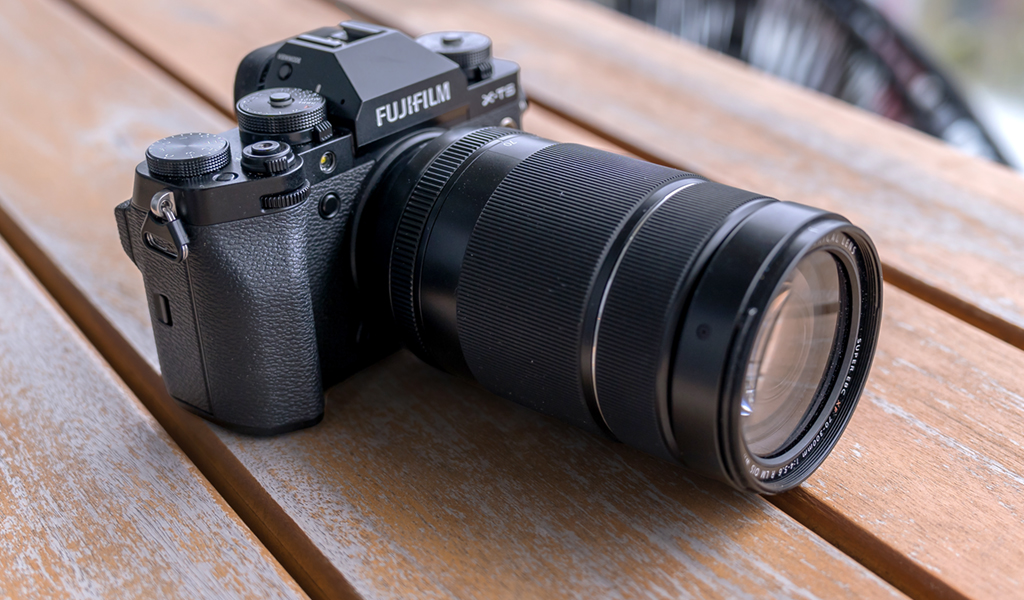
The Fujifilm X-T5 takes a distinct turn towards still photography over the hybrid video approach of its predecessor. That’s really the best way to sum up the focus behind this camera and who it suits most but that’s not to say there isn’t a large degree of versatility involved here.
Like the rest of the X-T line, the X-T5 isn’t a full-frame mirrorless shooter, sticking to the APS-C sensors that have helped define the company’s lineup. You get plenty of resolution, given the 40-megapixels in the sensor, with top-class autofocus and manual controls to take full control over how you want to compose your shots. If you’re looking to graduate to something fully loaded to make you an even better photographer, this one has the goods.
Design of the X-T5
I reviewed the X-T4 and found it a great opportunity to reintroduce myself to Fuji’s high-end cameras. Much like that camera brought additions to stand out from its predecessor, I was curious to see how the X-T5 would compare to the X-T4. What hasn’t changed is the general focus, which is obvious from a visual standpoint. The dials strongly indicate this camera is for shooters who feel comfortable with their own settings.
Interestingly, though, the X-T5 bears more of a photographic resemblance to the X-H2S, which prioritizes speed over resolution. If you’re looking to shoot a lot of fast action, like sports, that’s the better option, in my opinion. The X-T5 is more about shooting a little of everything, with the 40-megapixel sensor giving you more resolution, in case you need to crop or plan on capturing wider scenes, for instance.

The body is a little different from the X-T4 in a few ways. One is the rear LCD screen doesn’t fully articulate. You can tilt it up or down, and even turn it one way, but there’s no way to make it face you along with the camera. The image processor is considerably faster here, meaning the X-T5 can capture light more efficiently through a greater variance in shutter speeds. For more professional purposes, the Pixel Shift Multi-Shot feature can combine up to 20 images together into one massive 160-megapixel image. The process involves combining red, blue and green pixels together for better colour reproduction, but the catch is it needs to shoot a totally static subject. If anything moves within the frame, it could ruin the photo.
Other changes show themselves in setup and output. Fuji took a refined approach to make the X-T5 feel like it fits into any photo shoot, which necessitates learning the various features.
Setup and new features
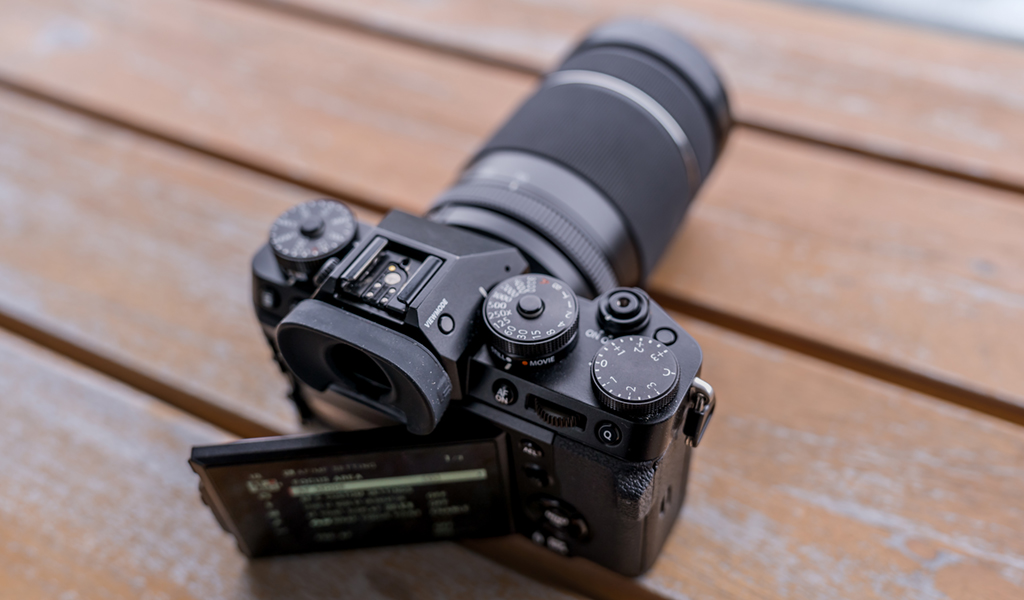
Fuji knows how to do focus right, and while you get the same number of focus points (425) as the X-T4, you get more autofocus this time. The X-T4 was limited to face or eye detection for humans, but the X-T5 expands that to animals, like birds, cats, dogs, etc., as well as objects, like cars, trains and airplanes.
I got used to seeing this on competitors’ cameras, so it’s nice to have the flexibility here. The gist is the onboard software recognizes the subject and automatically applies focus once you half-press the shutter. It’s an amazing way to capture a bird about to take off or a dog running toward you, since the focal point hones in on the animal’s eye.
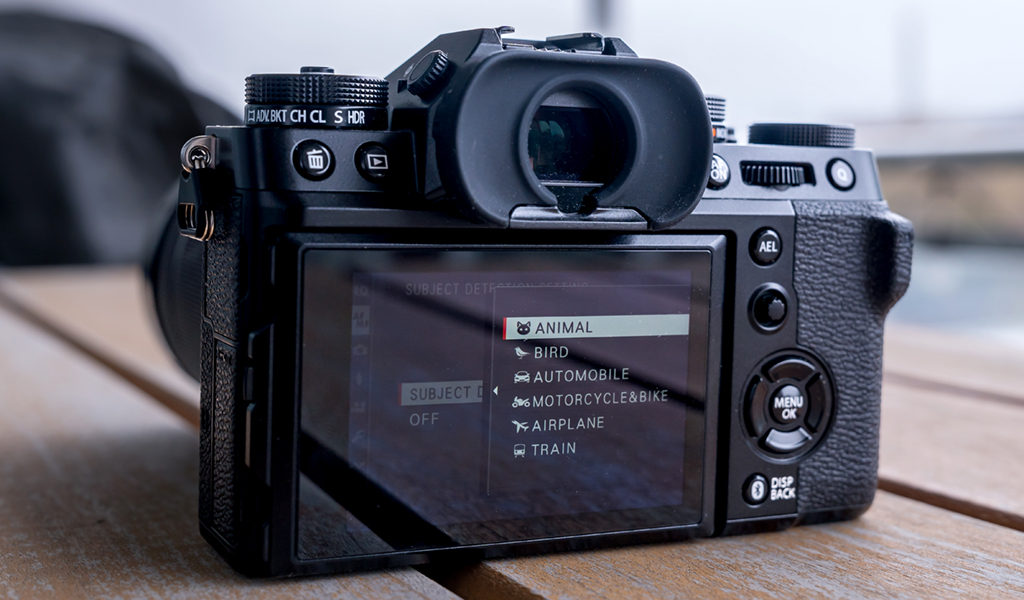
My one gripe is you need to always be aware of what your settings are. It’s not as easy to simply switch or toggle between the options when you have to manually go through the menu to find and select them each time. For example, if you want to switch between a bird or animal, you have no shortcut to do it in a single press. That loss of time could ruin an otherwise fantastic photo. All in all, focusing is very fast at all times, and you can otherwise move focus around using the joystick, if you prefer.

The existing dials generally do the same things the X-T4 did. Switch drive modes on the left dial when you want to shoot in burst, or between photos and video with the right one. The mechanical design with the dials makes it clear where you stand, though you can also override some of those settings through controls within the main or shortcut menus.
Storage and processing
The X-T5 retains the dual SD memory card slots supporting both UHS-I and UHS-II cards. You’ll want to prioritize the latter for the faster read and write times, which are critical for burst shooting and 4K video recording. You can switch between the card slots anytime, letting you shoot bursts on one, while capturing more composed shots on another, for example. It’s just not all that convenient to make the switch, a feature Fuji hasn’t really addressed yet. If you’re worried about a card failing, set it up in the menu to save to both simultaneously.
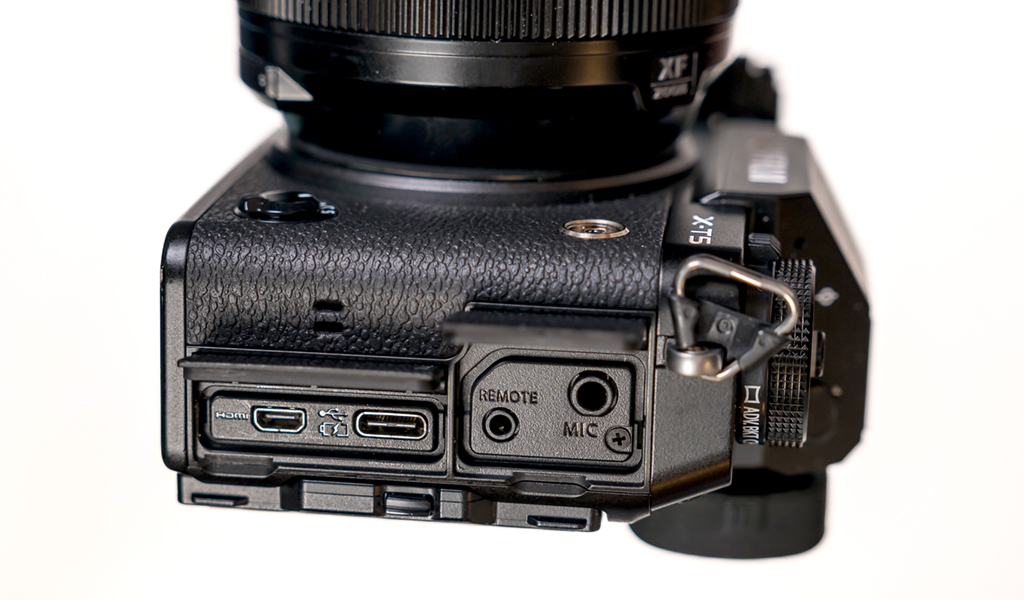
The good news is the faster processor and focusing help you simply take the photos faster, only the camera can’t do anything about buffering. The X-T5 maxes out at about 20fps using the electronic shutter. Shoot in RAW and the buffer increases unless you’re using a really fast UHS-II card. Mind you, the X-H2S is clearly built to offer the best of both worlds, including its support for even faster CFExpress cards.
Don’t look for too much help from Fuji’s Photo Transfer app either, which still feels like it lags behind. Your other option is to try tethering with a laptop using the appropriate software to send images over as you snap them—a great studio setup you can experiment with.
Fujifilm XT-5 image quality
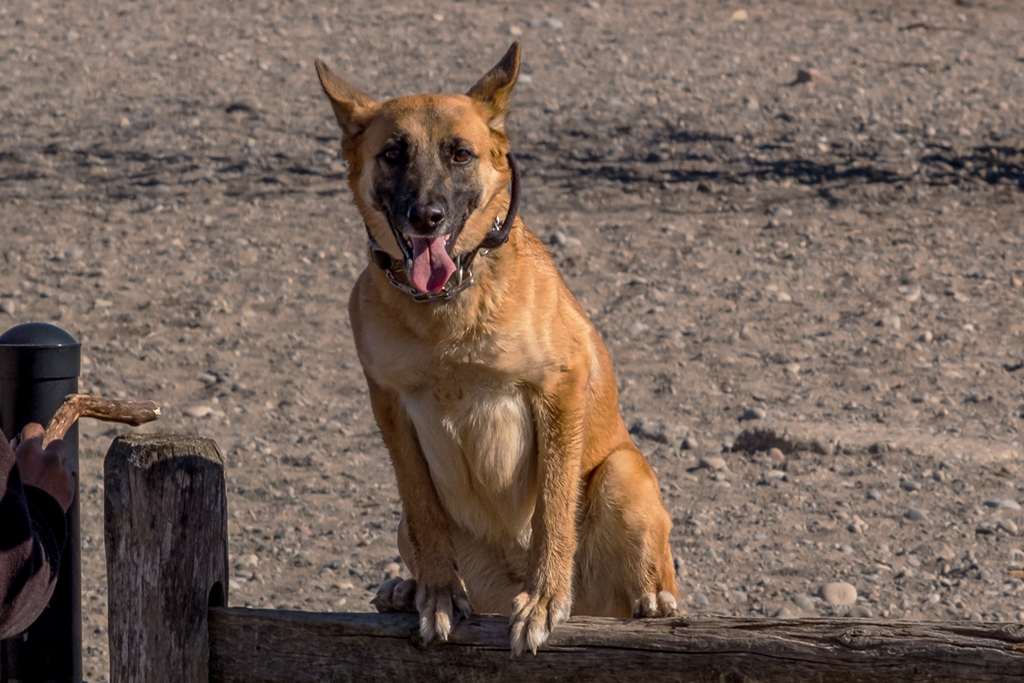
I prefer to shoot in RAW, but for reviews, I always look to see what JPEGs give me too. You look at the specs and notice the lower ISO range, but I wouldn’t worry so much about that. The X-T5 works under a certain level of compromise, meaning it captures excellent images most of the time, yet not without some points to consider.
Shoot in low light or night with a higher ISO and you notice the software processed the shot to hide as much of the noise or grain as it could. This won’t happen with RAW images because you’re supposed to do the processing yourself, but you get the idea. Full-frame mirrorless cameras hold an advantage with their larger sensors in these situations, but Fuji’s camera does well despite cramming in so many pixels into an APS-C format image sensor. I came away impressed at the variety and imagine you would as well.
What helps the cause is Fuji’s library of film simulations. Start with Provia and work your way around the others to see what you can do. The best part is you can apply different simulations to images even after you’ve shot them using the in-camera editor. Or you could always go for the same effect using your preferred photo-editing program.
This may not be the ideal fast action camera for sports and wildlife, but I would say that’s also relative. It’s one thing if you want to capture your children in action playing sports, or trying your hand at bird watching, but quite another if you’re looking at this for commercial use with either endeavour. View it as a serious shooter for most settings, and you’ll find ways to make it work for most shoots.
Video with the Fujifilm XT-5
The X-T5 is definitely photo-centric, but it’s not a dead-end for video. You can’t shoot in 8K, but you can shoot in 6.2K at 30fps. You can also do 4K at 60fps, except you have to accept a crop factor, so you lose out on the full width of the sensor. Footage looks good, but frankly not as good as it would from the X-H2S. Throw in the crop factor with 6.2K and 4K/60fps and you begin to realize the limits inherent here.
You get to save footage in either h.264 or h.265 with HEVC compression and 10-bit colour, as well as applying the film simulations, if you want. If your workflow treats video footage as a secondary purpose, the compromises won’t feel as stark. If video really matters, however, I would consider a different option so you can shoot without losing as much.
Focus tracking works fairly well, and subject tracking applies here as it does to photos. It’s not going to be as fast as the X-H2S, but still formidable when you put it into action.
Battery life

Higher efficiency means longer battery life. Not extensively so, but appreciated nonetheless. Fuji rates the X-T5 at about 580 photos per charge on Normal mode, and as many as 740 in Economy mode. Bear in mind that Economy mode slows down the autofocus, so probably not something you want to use unless you’re in a power crunch. You should easily cross 500 shots per charge, which is an improvement over the X-T4.
Final thoughts on the Fujifilm XT-5
The X-T5 takes much of what made its predecessor so fun to use and expands on it in excellent ways. Its purpose now feels more linear as a photography camera first, and video recorder second, so if that order works for you, then you should come away satisfied. It also helps the camera takes a few cues from Fuji’s X-H line, particularly the higher resolution that can come off like a gift when you capture certain images.
You have to go in being comfortable with manual controls because that’s what the X-T5 requires. If you prefer to go with something more well suited to video, consider the X-H2S instead.
The Fujifilm X-T5 is available now bundled with the 16-80mm kit lens.











